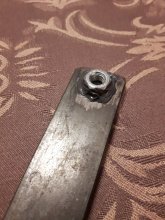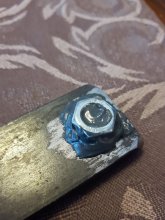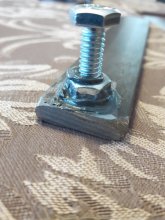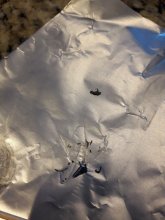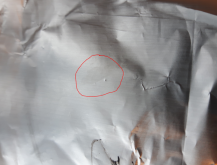Hedges
I See Electromagnetic Fields!
- Joined
- Mar 28, 2020
- Messages
- 21,392
So I think you are saying you would only apply JB Weld to the male thread (without a vent hole)?
Yes.
Vent hole could be good, ensures air escapes. But should work without.
If JB Weld was on female thread, would push to the bottom and cause hydraulic lock.
On male thread, only a little would enter female and would probably bond stud to it.
Most epoxy would stop at the beginning of non-stripped female thread, so would back up and fill stripped area.
Trapped air might just compress (to about 100 psi) or might form a channel through epoxy in stripped area and escape. Probably would leave most epoxy bonding stud threads to stripped surface, easiest to follow air that already escaped. There would be some size bubble formed through the epoxy.
If you had a brake bleeder, could put a cup over the stud placed in hole but not threaded, and draw vacuum. However, that may suck in epoxy, leaving the hydraulic lock issue. Maybe if thread barely started, after drawing out air the 15 psi backfilling wouldn't move epoxy in very fast.
Hmm, this could also be a way to draw epoxy into a (top stripped) hole. Similar to windshield "star" repair.
All depends on viscosity. If you're unlucky, you get only the resin and not the filler.



